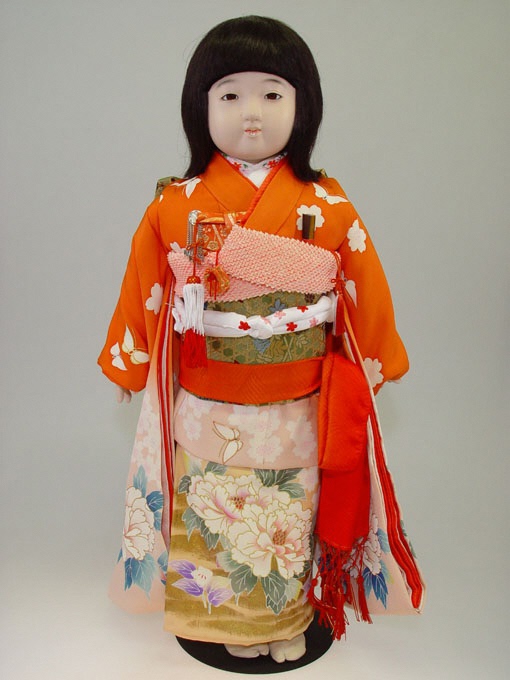公開日 2021年11月12日
Blue-eyed Friendship Doll in Oyama Elementary School
5. Torei Ningyo (Dolls of Gratitude) Sent across the Pacific Ocean
Mrs. Wada, whose letter was mentioned above, also gave us other important information in the letter. It provides the evidence to the fact that 58 Japanese ‘black-eyed’ dolls were sent back to the US to show gratitude. She wrote as follows;
Afterwards, each prefecture sent a Japanese doll to the US. A doll named ‘Kanako-chan’ was sent from Kanagawa Prefecture. The farewell party for her was held in Matsuda (present Ooi Town), which I attended with Miss Yamamoto in the advanced course and Mr. Ukawa (the teacher, who came from the shrine in front of Koyasu Myojin-Shrine).
How peaceful those days were to let the school representatives attend a doll’s farewell party! The schoolyard was full of people. It was probably the season when the cherry blossoms started falling. Singing the farewell song, everybody cried, because America seemed a faraway country to us. I remember the words of the song clearly.
1. All the way across the wide ocean, I am going to America, where cherry trees went ahead already.
Good-bye, everyone. Good luck to you!
2. Kanako-chan, you are friendly and kind. We hope you will make good friends with children beyond the ocean. Good-bye, Kanako-chan. Good luck to you!
Crying, we said good-bye to her.
The letter shows us that, treating Kanako-chan not as a doll-shaped object but as a living human being, they entrusted their wish for Japan-US friendship and international peace to Kanako-chan.
Though Gulick, the advocate of the friendship doll project, had sent a letter to Shibusawa saying there was no need for Japanese to send back return presents to the US, Japan Committee on International Friendship among Children decided to send back traditional Japanese dolls called ‘ichimatsu’ dolls to the US as return presents in time for Christmas. To fund the project, the committee collected 1 sen (about 0.1 cent) each from girls of the schools given the American blue-eyed dolls, and such excellent doll makers in Tokyo and Kyoto as Koryusai Takizawa and Goyo Hirata made 58 dolls with the greatest craft.Each doll cost as much as 350 yen (equivalent to present 3 million yen). After each of 52 prefectural representative dolls and 6 representative dolls of the principal six cities was given a farewell party in each area, they were assembled at Yokohama Port Opening Memorial Hall to attend their final farewell party on October 21st, 1927. There is an article about the event in the 1927 edition of ‘the Annual Report of the School Affairs in Oiso Elementary School’ (owned by Ryoji Sato). It says, ‘On October 21st, the teachers and the students of our school attended the farewell party held by the prefecture for the doll to be sent to the US. One of the students of our school read a letter to be sent to the US.’ Given Japanese names as the blue-eyed dolls, their passports and tickets for first-class the dolls as return presents left the Port of Yokohama for the US aboard a large passenger ship ‘Tenyo-maru’. After reaching San Francisco by way of Honolulu, Hawaii, the dolls were enthusiastically welcomed by the Japanese immigrants and consoled them. Afterwards, the dolls visited various places by land or by sea and they were greatly welcomed everywhere. In Chicago, they met Gulick, their father as it were, and got to Washington D.C. on Christmas Eve. After attending the final welcome event held at Boston City Hall on January 16th the next year, all of them were handed to World Committee on International Friendship among Children and distributed to such public facilities as museums and libraries on one-state-one-doll basis. They were kept safe after displayed.

- a replica of one of the Dolls of Gratitude(Torei Ningyo):Sakurako
- (owned by Yokohama Doll Museum)
Next⇒6. From the past to the future
- 1. Introduction
- 2. Relations between Japan and the US in Those Days
- 3. Doll Exchange Project ~ Gulick and Eiichi Shibusawa
- 4. Blue-eyed Dolls Coming to Japan
- 5. Torei Ningyo (Dolls of Gratitude) Sent across the Pacific Ocean
- 6. From the past to the future
Previous⇒4. Blue-eyed Dolls Coming to Japan


